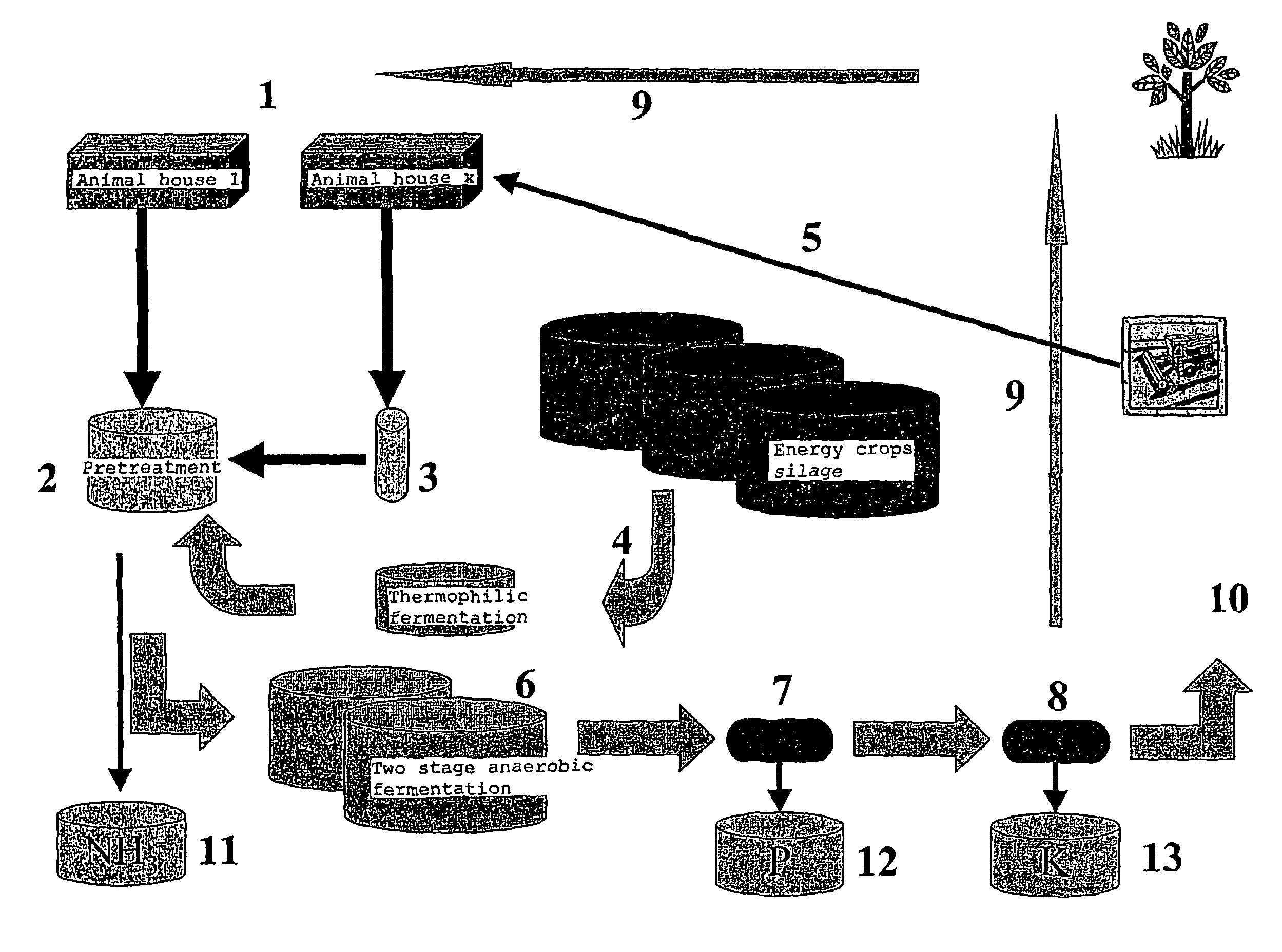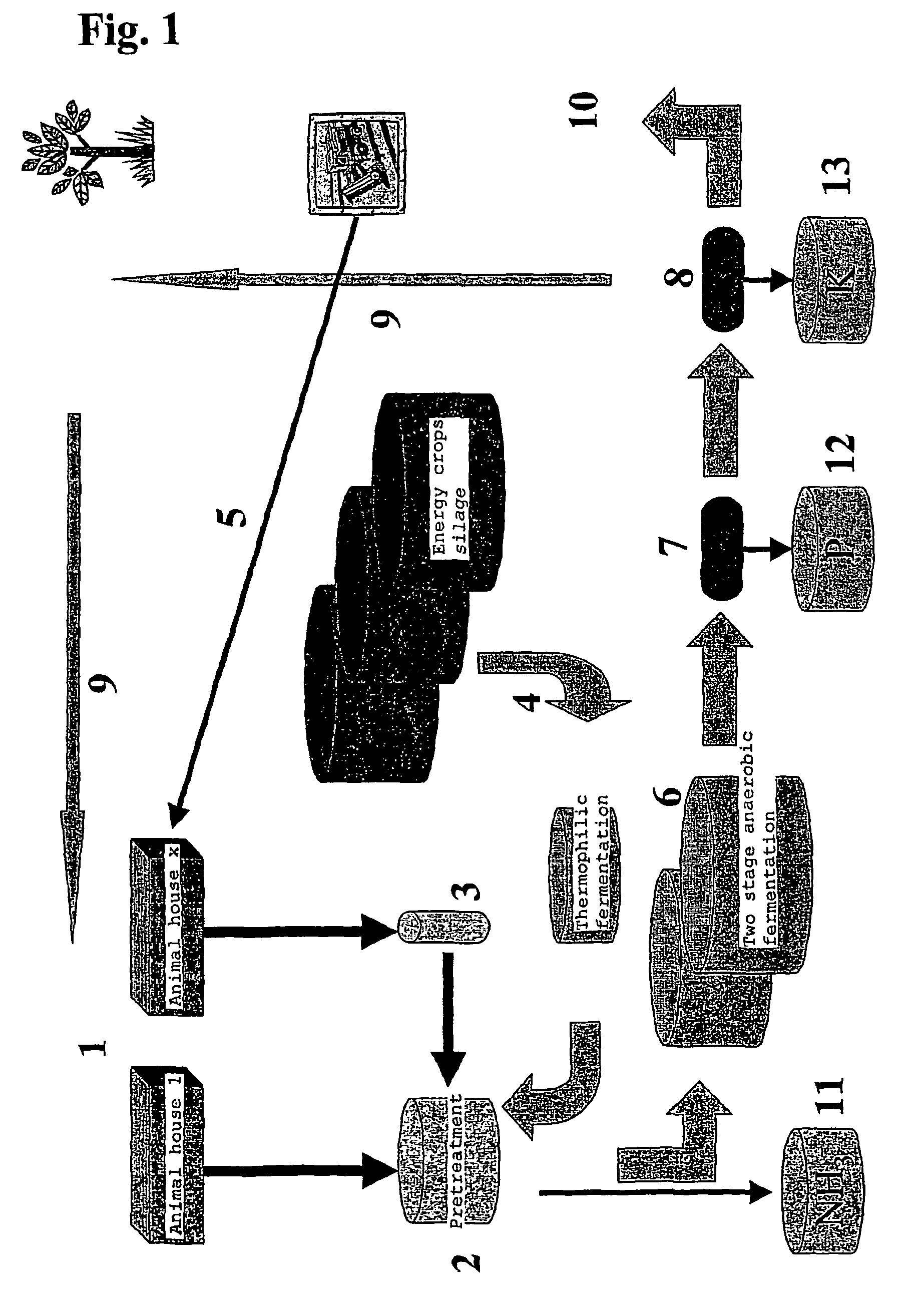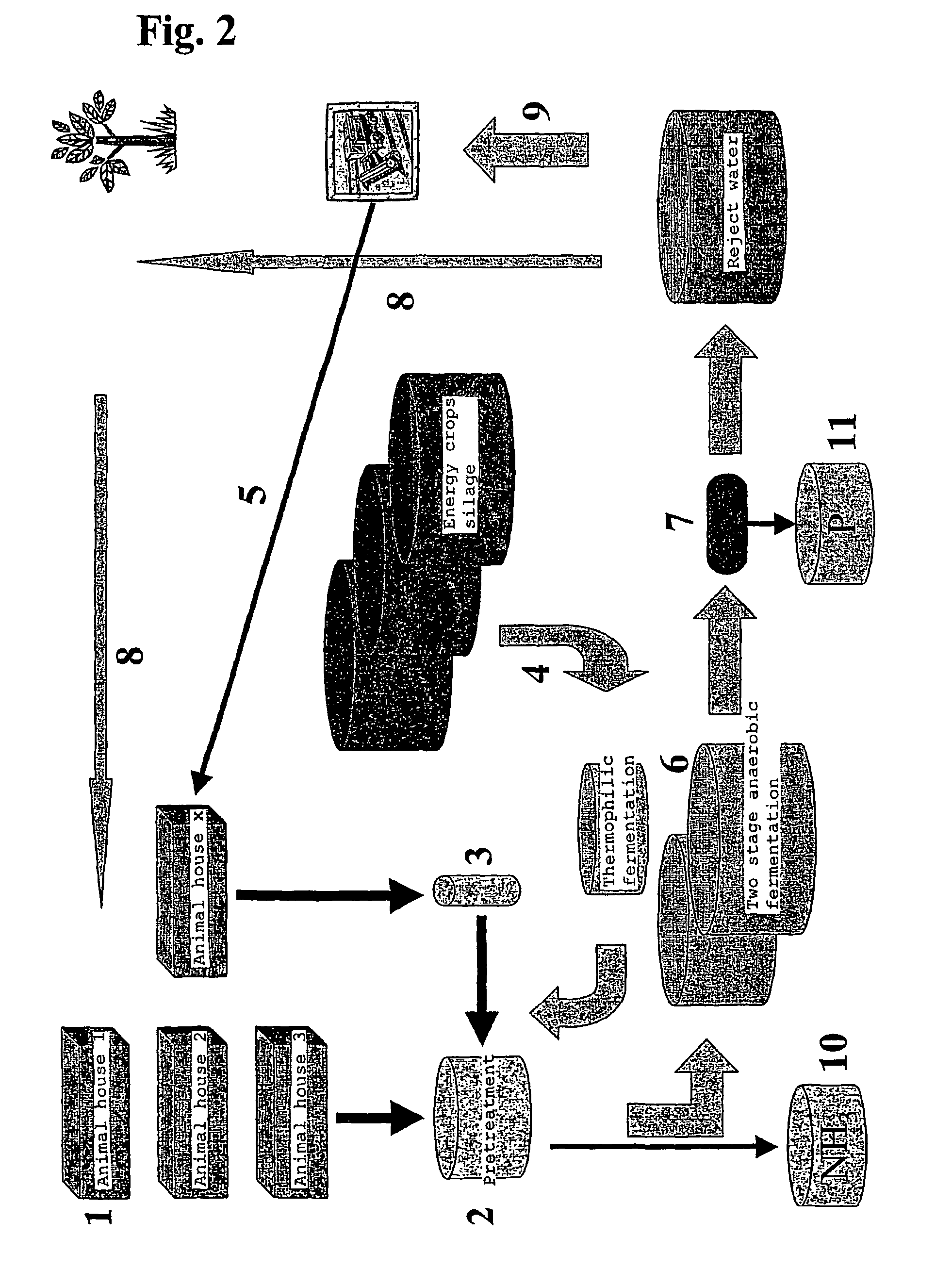Concept for slurry separation and biogas production
a biogas and slurry technology, applied in the field of anaerobic digestion, can solve the problems of struvite, affecting the production efficiency of slurry, so as to achieve the effect of high dry matter yield
- Summary
- Abstract
- Description
- Claims
- Application Information
AI Technical Summary
Benefits of technology
Problems solved by technology
Method used
Image
Examples
Embodiment Construction
[0172]The present invention pertains to a number of individual aspects as described herein further below.
The First Aspect (Sanitation)
[0173]The first aspect includes a system consisting of a first device, a house or stable for the rearing of animals including domestic animals such as pigs and cattle, and / or a second device mainly for stripping of ammonia and pre-treatment of the substrate and / or a third device mainly an energy plant for improved production of energy from the substrate.
[0174]The system can preferably consist of an animal house and a stripper tank and a biogas reactor. Additional components can include a device for addition of CaO or Ca(OH)2 to the slurry, an absorption column operated on the basis of e.g. sulphuric acid, a storage tank for the ammonia concentrate, and a storage tank for digested slurry.
[0175]The produced biogas can desirably be used for production of current and heat in a gas motor and generator, the current preferably being sold to a net and the hea...
PUM
| Property | Measurement | Unit |
|---|---|---|
| temperature | aaaaa | aaaaa |
| temperature | aaaaa | aaaaa |
| temperature | aaaaa | aaaaa |
Abstract
Description
Claims
Application Information
 Login to View More
Login to View More - R&D
- Intellectual Property
- Life Sciences
- Materials
- Tech Scout
- Unparalleled Data Quality
- Higher Quality Content
- 60% Fewer Hallucinations
Browse by: Latest US Patents, China's latest patents, Technical Efficacy Thesaurus, Application Domain, Technology Topic, Popular Technical Reports.
© 2025 PatSnap. All rights reserved.Legal|Privacy policy|Modern Slavery Act Transparency Statement|Sitemap|About US| Contact US: help@patsnap.com



